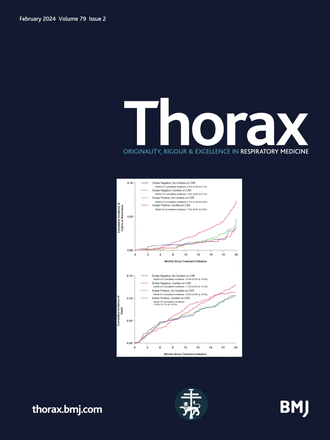Computational fluid dynamics model predictions of inhaled corticosteroid deposition in patients with severe asthma
IF 9
1区 医学
Q1 RESPIRATORY SYSTEM
引用次数: 0
Abstract
Background Some patients with severe asthma have persistent type-2 inflammation despite being treated with high-dose inhaled corticosteroids (ICS). The variability in ICS deposition between patients with severe asthma is not well-understood and could contribute to this persistence. Objectives To characterise and compare model-predicted deposition of fine-particle and extrafine-particle ICS in patients with severe asthma based on biomarkers of type-2 inflammation, airway morphology and airway function. Methods Twenty-eight patients with severe asthma performed full-inspiration and full-expiration chest CT on the same day that biomarkers of type-2 inflammation were measured. Functional respiratory imaging and computational fluid dynamics were used to simulate and predict intrathoracic, central and peripheral airway deposition, and central-to-peripheral airway deposition (C:P) ratio of fine-particle ICS (fluticasone-propionate HFA) (ICSFP) and extrafine-particle ICS (beclomethasone-dipropionate HFA) (ICSEFP). CT-derived wall area percent (WA%), lumen area (LA) and mucus burden were quantified to characterise airway morphology. Results Simulated deposition of ICSEFP was higher than ICSFP in the intrathoracic, central and peripheral airways (all p<0.0001). Greater WA% and smaller LA were correlated with greater C:P ratio of ICSFP (r=0.60, p=0.0068; r=−0.60, p=0.0072) and ICSEFP (r=0.54, p=0.028; r=−0.54, p=0.026). Participants with elevated sputum eosinophils had a greater C:P ratio, irrespective of particle size (ICSFP, p=0.045; ICSEFP, p=0.021). Conclusions In severe asthma patients with thicker airway walls, narrower airway lumens and elevated biomarkers of type-2 inflammation, a smaller ratio of ICSFP reached the peripheral airways. ICSEFP did not fully mitigate this. Patient-specific airway morphology may impact regional ICS deposition and contribute to persistent inflammation. Data are available upon reasonable request.求助全文
约1分钟内获得全文
求助全文
来源期刊

Thorax
医学-呼吸系统
CiteScore
16.10
自引率
2.00%
发文量
197
审稿时长
1 months
期刊介绍:
Thorax stands as one of the premier respiratory medicine journals globally, featuring clinical and experimental research articles spanning respiratory medicine, pediatrics, immunology, pharmacology, pathology, and surgery. The journal's mission is to publish noteworthy advancements in scientific understanding that are poised to influence clinical practice significantly. This encompasses articles delving into basic and translational mechanisms applicable to clinical material, covering areas such as cell and molecular biology, genetics, epidemiology, and immunology.
 求助内容:
求助内容: 应助结果提醒方式:
应助结果提醒方式:


